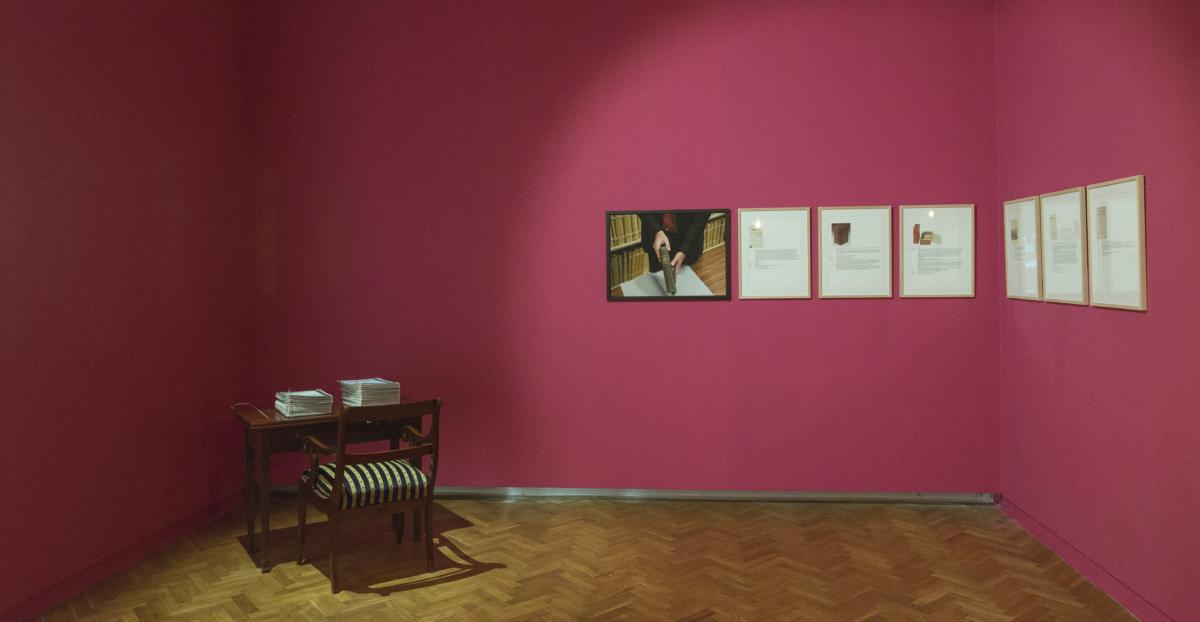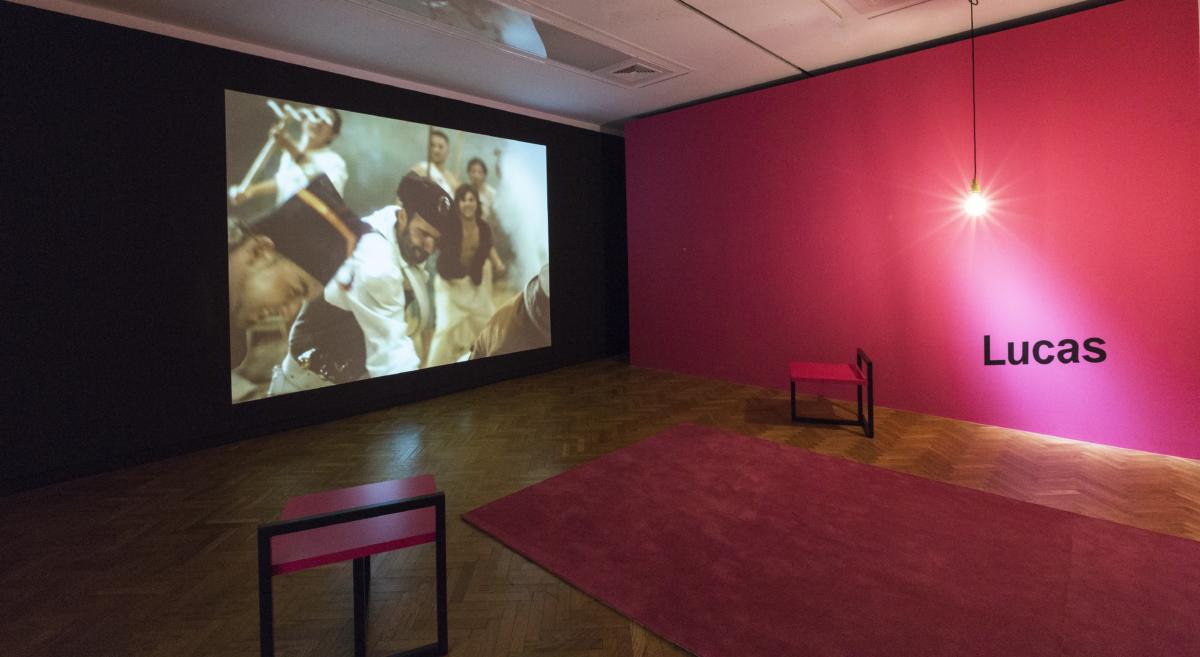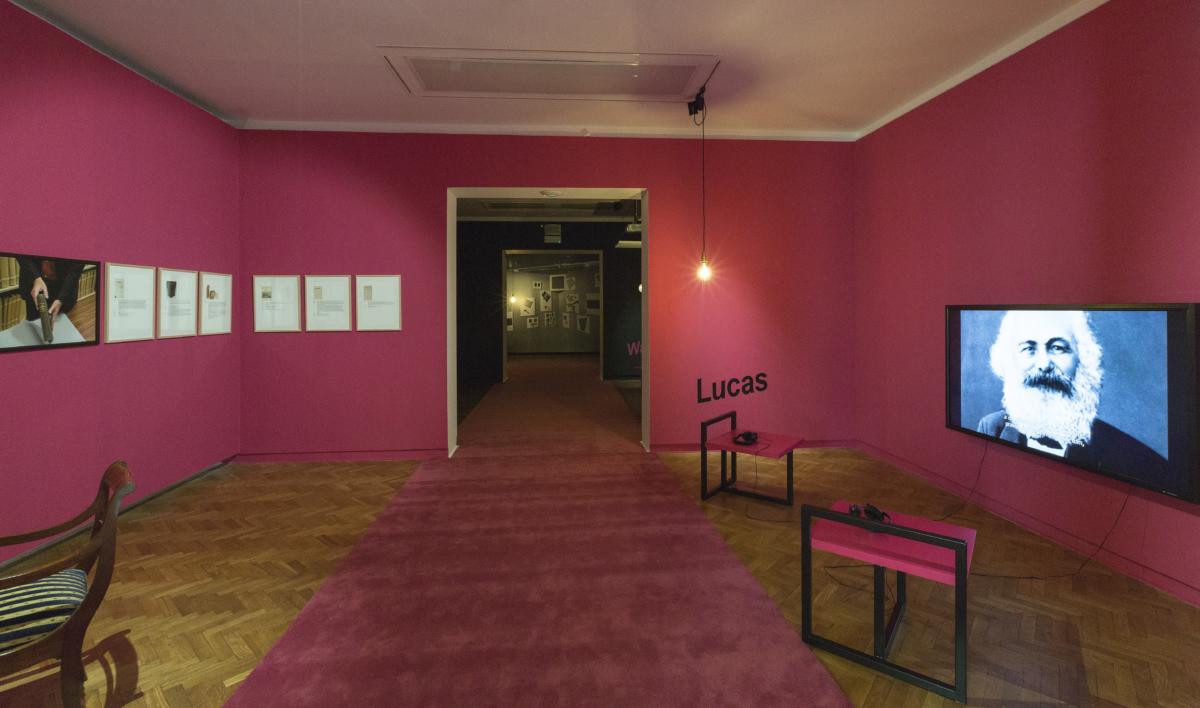‘The Storming of the Winter Palace. Forensic of an Image’ at Muzeum Sztuki in Łódź

The Storming of the Winter Palace project is devoted to the photograph which, as no other, has become the symbol of the October Revolution. However, this photograph does not present a historical event, but only its staged reconstruction. In 1920, a Russian theatre director Nikolai Evreinov (1879-1953), on the occasion of the third anniversary of the revolution, accepted the commission to recreate the incidents that had taken place at the Winter Palace. The photograph taken during the performance, which in fact provided a false picture of the assault on the Palace, soon after it had been taken, started to be treated as a historical document, and its reproductions appeared in the press, school textbooks and chronicles.
The photograph allegedly depicts the Bolshevik storming of the Winter Palace, an event that gave rise to the revolution. However, in reality, no photographs have been preserved from the incidents of the year 1917. Even if there was a photographer on the spot, he could not have taken such a photo, because we know today that the assault on the Palace had not in fact taken place – at least in the way that was presented by the Soviet propaganda and perpetuated later in its historiography. The truth was that the Provisional Government of Russia was attacked not by a mass of revolutionaries but by a handful of Red Guards who simply captured the ministers as they surrendered without resisting. In retrospect, the lack of photographs that could have visualized the attack on the Winter Palace turned out to be particularly convenient for the Bolsheviks as in the absence of an authentic record the world was given its staged version.
Historical re-enactment of the 1920 is an example of one of the most remarkable performances that have ever taken place, the one in which about 10,000 extras were involved, and which was watched live by 100,000 viewers. Whether or not the director himself was aware of the fact that he was part of creating a false image of the beginning of the revolution for many generations to come is not clear from the notes he left. However, he certainly took the opportunity to (perhaps forced to follow strict instructions), as Sylvia Sasse describes: “make an insignificant event big by means of theatrical ploy. One could say that he was to write that story from scratch.” Under the conducting of Evreinov and his co-directing team, the unspectacular events of 1917 turned into a massive “superproduction”.


“The Storming of the Winter Palace” exhibition will show all the existing records of its staging, uncovered in the archives so far (including a film and 63 photographs). Its detailed design will bring the audience closer to understanding the processes that enabled this falsified vision of history to become an official part of the Soviet historiography. Therefore, one part of the exhibition will present the results of a detailed analysis which reveals the fakeness of the photograph, as well as the artificiality of circumstances in which it was supposedly taken. Where were the cameras set up? Where at that time were the director and his assistants who had to help him direct a crowd of extras as he instructed them with the aid of a telephone line?
The presentation of nine works prepared by six contemporary artists will complement the historical materials. While engaging in a dialogue with Evreinov’s realisations, they, at the same time, explore some issues of history, memory, theatrical staging and repetition.
A video installation of the Russian artistic group called Chto Delat (What to Do) presents its version of the storming of the palace, filmed in the original location (nowadays the square in front of the Hermitage State Museum in Saint Petersburg), and made in the style of a horror movie with the participation of zombies. In turn, the Swiss theatre director Milo Rau set his version of the attack on the square in front of the Reichstag, the seat of the German Parliament. Both works were created especially for the exhibition. Through their works, both artists ask the same question, namely, who today is the “third state”, unrepresented in any parliament. Another project referring directly to the events of the Winter Palace storming comes from Poland. The work presents the recordings of the three Eves of the Great October Revolution outbreak of the years: 1987, 1988 and 2001. The presentation prepared by Waldemar Frydrych and his Orange Alternative takes a form of a surrealistic happening.


Other works by Cristina Lucas, Kazimir Malevich and Peter Watkins are not attempts to recreate the storming. Instead, they encourage the viewers to ask questions about the relationship between the image, history and document, which while undermining, among other things, the concept of authenticity, refer to the fragility of memory and historical narrative.
The exhibition will feature two works by a Spanish artist – Cristina Lucas. The first is entitled La Liberté raisonnée (2009), which is a mobile version of the famous painting by Eugène Delacroix Liberty leading the People, showing, among others, what happens to Liberty when the famous scene comes to an end. On the other hand, in the Surplus Value installation (2014-2016), Lucas is working on Karl Marx’s Capital. From the installation, we learn that the particular pages of the original manuscript are sold on the international art market for huge amounts of money, which seems to be an ironic repetition of the issues described in Capital.



The exhibition will also feature over forty artworks attributed to Kazimir Malevich, the famous suprematist of the first half of the twentieth century. But why are these works dated 1985-2009? The fact is that Malevich made many copies of his works, including those for the famous exhibition “Grosse Berliner Kunstausstellung” (1927), during which he presented a retrospective composed of seventy works. The work in the exhibition at ms1 consists of a large wallpaper depicting a photograph of the installation of The Last Futurist Exhibition, 1985-2011, as part of the current presentation of the collection of Muzeum Sztuki at ms2. While we know of the original exhibition of 1915 only through a single photograph, the wallpaper depicts a souvenir from our collective memory, reconstructed on the basis of that very photograph.Since then, many of these reproductions have been transferred to the largest museums which present contemporary art, including MoMA in New York. The turbulent history of the work of Malevich, who died in 1935, is as complicated as the history of copies presented at the exhibition of “The Storming of the Winter Palace.”
The exhibition will be complemented by the production of British director Peter Watkins. It is a monumental and – in the best sense of the word – overwhelming film, entitled La Commune (de Paris) filmed in 1999. This almost six-hour long production shows the history of the Paris Commune performed by amateur actors, asking the question about the timeliness of this historic event.
Imprint
| Artist | Chto Delat, Nikolai Evreinov, Waldemar Fydrych (Pomarańczowa Alternatywa-Orange Alternative), Cristina Lucas, Kazimir Malevich, Milo Rau, Peter Watkins |
| Exhibition | The Storming of the Winter Palace. Forensic of an Image |
| Place / venue | Muzeum Sztuki in Łódź |
| Dates | 06 April 2018 – 03 June 2018 |
| Curated by | Inke Arns, Sylvia Sasse |
| Website | msl.org.pl/en |
| Index | Chto Delat Cristina Lucas Inke Arns Kazimir Malevich Milo Rau Muzeum Sztuki in Łódź Nikolai Evreinov Peter Watkins Sylvia Sasse Waldemar Fydrych (Pomarańczowa Alternatywa-Orange Alternative) |
